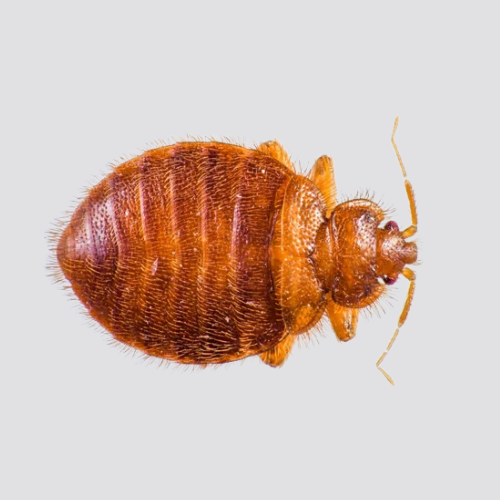Bat Bug

Proud Supporter of Disabled Veterans
No Contracts
Services provided without written contracts.
Introduction to
Bat bugs, closely related to bed bugs, are ectoparasites primarily found in bat colonies. Scientifically known as Cimex adjunctus, these small insects can occasionally infest human dwellings, especially when bats roost in attics or wall voids. While they resemble bed bugs in appearance and behavior, understanding the distinct characteristics and habits of bat bugs is crucial for effective management and control. Addressing a bat bug infestation involves not only treating the bugs but also dealing with the underlying bat issue.
Recognition
Bat bugs are small, reddish-brown insects, typically measuring about 3 to 5 mm in length. They have flattened, oval bodies and are often mistaken for bed bugs due to their similar appearance. A key distinguishing feature is the longer fringe hairs on the pronotum (the area behind the head) compared to bed bugs. These hairs are about as long as the width of the bat bug’s eye. Bat bugs also have a slightly different body shape, being less elongated than bed bugs. They are usually found in close proximity to their primary hosts, bats, but can move into living spaces if their bat hosts are removed or leave.
Biology
Bat bugs undergo gradual metamorphosis with three life stages: egg, nymph, and adult. Females lay eggs in secluded areas near bat roosts. The eggs hatch into nymphs, which go through several molts before becoming adults. Nymphs and adults require blood meals to develop and reproduce. While their primary hosts are bats, bat bugs will feed on humans if bat hosts are not available. Adult bat bugs can live for several months without a blood meal, making them resilient pests. Their lifecycle is closely tied to the presence of bats, and their population can quickly grow if the bat colony is large.
Habits
Bat bugs are typically found in attics, wall voids, and other areas where bats roost. They hide in cracks, crevices, and other secluded spots during the day and come out at night to feed on their hosts. While they prefer bats, bat bugs can bite humans, causing itchy, red welts similar to bed bug bites. Bat bugs are usually introduced into homes via bats that roost or enter the living spaces. They do not travel far from their host’s nesting sites, but they can infest living areas if bats leave or are excluded from the building without proper pest management measures.
Prevention
Preventing bat bug infestations involves a combination of bat exclusion and environmental control. Seal entry points around the home to prevent bats from roosting in attics or wall voids. Install bat houses away from the home to provide alternative roosting sites. Regularly inspect and maintain the exterior of the building to ensure it is bat-proof. If bats are present, professional bat exclusion services should be used to safely remove them and seal entry points. Additionally, clean and vacuum areas where bats have roosted to remove any potential bat bug eggs or nymphs. Maintaining a clean and secure environment is key to preventing bat bug infestations.
Professional
If bat bugs become a persistent problem, professional pest control services can provide effective solutions. STL Pest Control offers comprehensive treatments to eliminate bat bug populations from homes. Their technicians are trained to identify and treat bat bug hotspots, using appropriate insecticides and integrated pest management techniques. In conjunction with bat exclusion services, they ensure that both the bat bug infestation and the underlying bat issue are addressed. Professional services ensure thorough and long-lasting control, providing peace of mind and a healthier living space for residents.



Our Office







